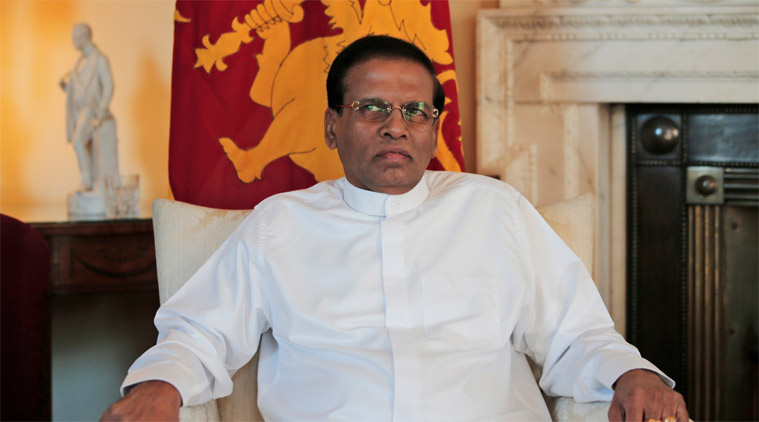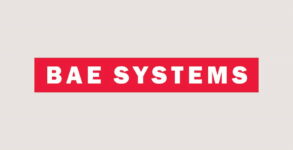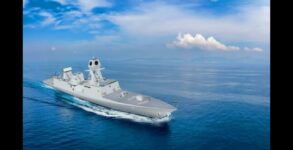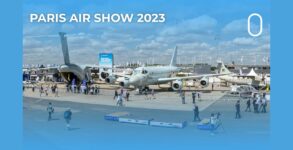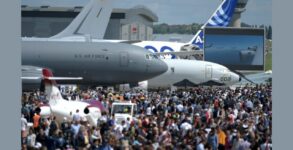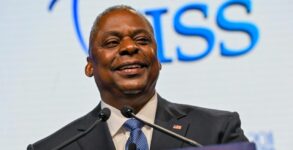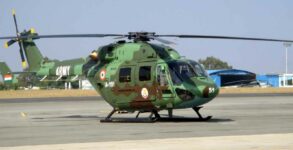Are competing geo-political rivalry between major international players and divergent affiliations among political leaders along pro-India or pro-China lines, a factor behind sudden eruption of crisis in Sri Lanka? Whatever may be the reason, Sri Lankan President Maithripala Sirisena’s decision to replace Ranil Wickremesinghe with Mahinda Rajapaksa as the country’s Prime Minister and then prorogue the parliament, has pushed the island nation into chaos, first time since 1931.
It has been rare in the Sri Lankan political history that a Prime Minister who enjoys majority support in the Parliament has been sacked by the President. To be precisely clear, the island country’s constitution prevents the President from sacking the Prime Minister unless latter loses confidence of parliament. And it is here the Sri Lankan President seems to have misjudged in reading the finer lines of his country’s constitution. If chaos has presently caught the so far peaceful country in its iron grip, it is due to him only.
However, President Sirisena has accused the deposed Prime Minister for the current situation. In his address to the nation, President Sirisena cited big differences over policy with Wickremesinghe for the dismissal. He linked the deposed Prime Minister to a controversial central bank bond sale, which is alleged to have led to the loss of $65 million to the country. The President also alleged that a Cabinet Minister was involved in a plot to kill him and that police had obstructed a probe into this allegation. Only a proper investigation will lead to the truth.
But it is a fact that differences between the two leaders started deepening when the Wickremesinghe government on July 6, 2018 announced in the parliament that India has agreed to form a joint venture with Sri Lanka to operate the loss making Mattala International Airport in Hambantota, lying a few kilometers away from the Hambantota Port which was given to China on 99 years lease. Media reports suggest that President Sirisena was against any deal with India for the airport. Instead, he wanted China to be part of the operation of the airport. No one knows why Sirisena was batting for China even as the fact is that he was the main campaigner against China during the 2015 presidential election.
India, which had taken a sigh of relief after the defeat of pro-China Rajapaksa in the January 2015 presidential election, has made it clear that it is closely following political developments in Sri Lanka. It has also expressed its hope that “democratic values and the constitutional process will be respected in the country.” In a veiled manner, New Delhi has sent across a message to current Sri Lankan President Sirisena that whatever he does, he should do it within the confines of the country’s constitution and by following duly laid democratic process.
Sri Lanka under Crisis: Directions Lost Sinhalese vs Islam?
The US has expressed its concern on the development in the island nation. The State Department in a statement released on October 29 urged the Sri Lankan President to “immediately reconvene parliament” in consultation with the Speaker of the House. “The democratically elected representatives of the Sri Lankan people should be allowed to fulfill their responsibility to affirm who will lead their government,” read the statement from the US State Department. UN Chief Antonio Guterres has called on the Sri Lankan government to “respect democratic values” and “uphold the rule of law.”
While international pressure has started mounting on the island country’s President for his rash and unconstitutional decision, deposed Prime Minister Wickremesinghe and his supporters are sparing no efforts to prove Sirisena wrong. Thousands of United National Party (UNP) supporters took out protest march in Colombo against the removal of Wickremesinghe. According to Wickremesinghe, he enjoys the support of 106 UNP law makers and 22 members from the Tamil National Alliance and the People’s Liberation Front in the 225-member House.
Maldivian election: Will India cut China to size in Maldives after Yameen is gone?
In contrast, Mahinda Rajapaksa, who belongs to the Sri Lanka Freedom Party (SNFP) of which the incumbent President also belongs to, has only 95 seats in the parliament. For any party to form a government in Sri Lanka, as many as 113 seats are required to have a simple majority in the House. Despite this, Rajapaksa was sworn in as the country’s Prime Minister. To facilitate him prove majority in the House, the President has suspended parliament till November 16. Obviously, by offering Rajapaksa such a long time gap to prove majority, President Sirisena, who was a Health Minister during the former’s presidency, has given the new Prime Minister enough time to muster support to survive any no-confidence vote. And it can’t happen without horse trading, an issue which never touched the shore of the island nation so far.
What is, however, surprising for international watchers is that the same Sri Lankan President who till a few months ago accused Wickremesinghe of shielding Rajapaksa, his family and supporters in corruption cases, has chosen to make the SLFP leader the new Prime Minister of the country. For this unthinkable turnaround, President Sirisena shifts the blame in Wickremesinghe’s court. But India needs to be alert. While Rajapaksa has already revealed what side of aisle he is, President Sirisena’s move has given enough hint to view him what is up to.
Disclaimer: The opinions expressed in this article are the personal opinions of the author. The facts and opinions appearing in the article do not reflect the views of NEWSD and NEWSD does not assume any responsibility or liability for the same.

